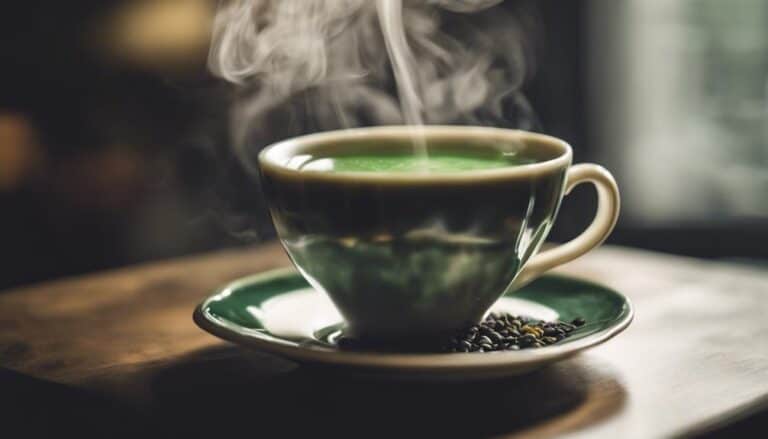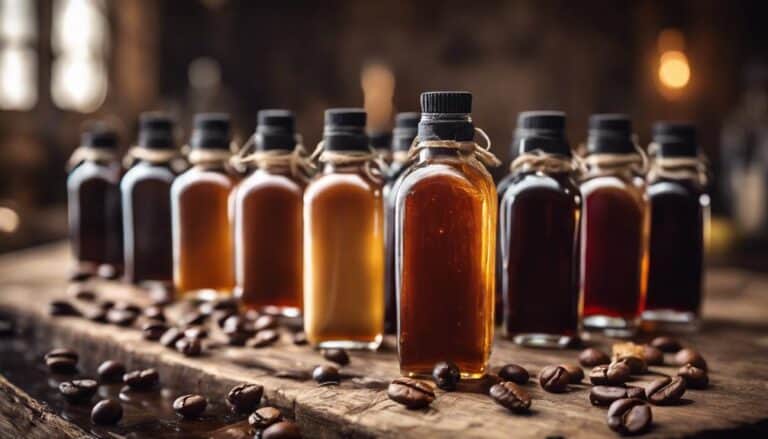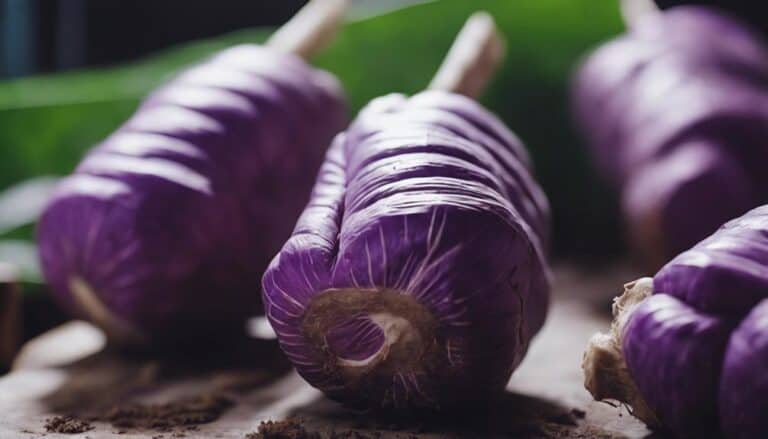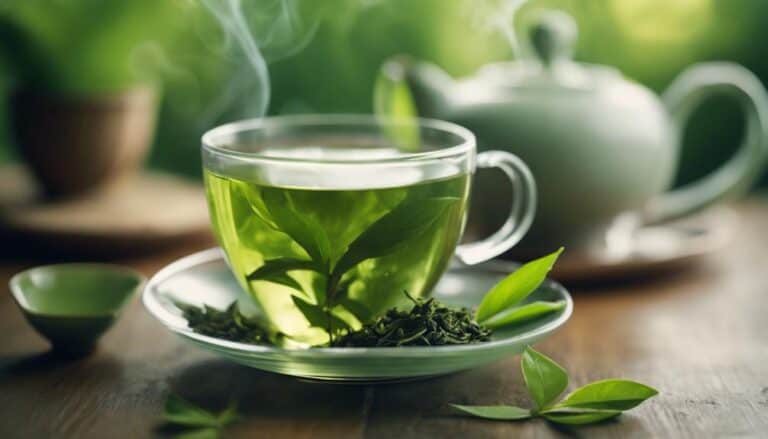A Coffee Lovers Guide: Longshot Vs Ristretto

As a coffee aficionado, I've always found the debate between Long shots and Ristretto quite intriguing. The contrast in flavors and brewing methods between these two espresso variations is something that can truly elevate your coffee experience. Each has its own unique characteristics that cater to different preferences, but which one reigns supreme? Let's explore the nuances and intricacies of Long shots and Ristretto to uncover the secrets behind these beloved espresso styles.
Ristretto Vs Long Shot: Overview
In my exploration of the world of espresso, the distinction between Ristretto and Long Shot is a fascinating study in contrasts.
Ristretto, a concentrated espresso shot originating from Italy, boasts an intense flavor profile and robust aroma. Its secret lies in using a finer grind size and half the water of a traditional espresso, resulting in a bold and flavorful experience.
On the other hand, the Long Shot, also known as Lungo, offers a longer extraction with a lighter taste and bright acidity. This espresso variant, appreciated since the early 20th century, serves as an invigorating alternative for those seeking a milder coffee experience, especially in the mornings.
The difference in brewing techniques between Ristretto and Long Shot reflects in their flavors. While Ristretto emphasizes a rich and concentrated essence, Long Shot presents a more delicate and nuanced taste. Understanding the balance between grind size, water volume, and extraction time is essential in mastering these two distinct espresso styles, each offering a unique sensory journey for coffee enthusiasts.
What Is Ristretto Coffee?
Ristretto coffee, a concentrated espresso variant originating from Italy, is characterized by its smaller volume and intense flavor profile, making it a favorite among aficionados of strong coffee. When comparing Ristretto to a traditional espresso shot, the key difference lies in the amount of water used. While both are brewed with the same quantity of coffee, Ristretto contains only half the water, resulting in a more concentrated and bold flavor profile.
| Ristretto Coffee | |
|---|---|
| Volume | 15-20 ml |
| Water | Half of espresso |
| Flavor | Concentrated |
| Origin | Italy |
Ristretto's intense taste and rich flavors have made it a beloved choice worldwide since its inception in Italy during the early 20th century. This small but mighty coffee is best enjoyed immediately after brewing, served in demitasse cups to capture its bold essence fully.
History of Ristretto
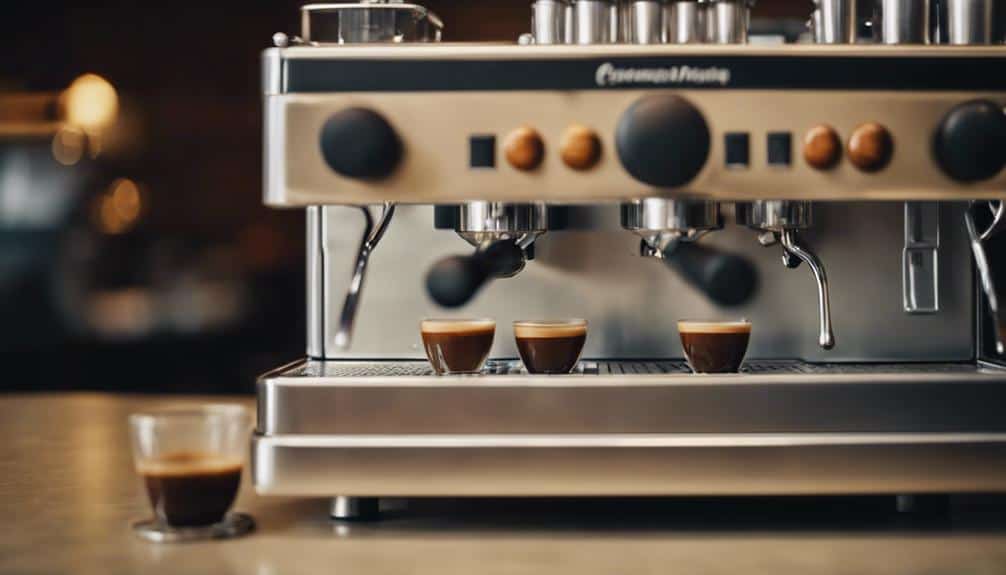
Ristretto, a coffee with a rich history originating in Italy during World War 2, has intrigued coffee enthusiasts with its intense flavors and quick extraction process.
Baristas' innovative brewing techniques were instrumental in crafting the bold and concentrated taste that defines ristretto. This journey of experimentation and passion led to ristretto becoming a globally beloved choice for those seeking a truly robust and concentrated coffee experience.
Ristretto: Meaning and Origin
Originating in Italy during the early 20th century, the creation of ristretto marked a pivotal moment in the evolution of espresso culture. This concentrated espresso shot, known for its intense flavor, is a result of baristas pulling only half the amount of water through the same quantity of finely ground coffee beans compared to a traditional espresso.
The bold flavor profile of ristretto gained popularity globally, finding its place in coffee shops worldwide. Its smaller volume, typically around 15-20 ml, delivers a rich and strong coffee experience cherished by many. The process of brewing ristretto involves precision and immediate serving to preserve its robust flavors, making it a favorite among those who appreciate the essence of a well-crafted espresso.
Ristretto: Brewing Technique
Delving into the intricate art of crafting the perfect ristretto, one finds that the brewing technique plays a pivotal role in revealing its bold and concentrated flavors.
The key to achieving the intense flavor of a ristretto lies in the precise brewing time and extraction method. With a shorter extraction time and half the water of a traditional espresso, the ristretto produces a smaller volume of coffee but with a more intense flavor profile.
This concentrated shot is favored by espresso enthusiasts for its rich crema and robust taste. By carefully controlling the brewing process, one can reveal the full potential of the ristretto, creating a sensory experience that captivates with each sip.
Making Ristretto
Using finely ground coffee beans and half the water of traditional espresso, making ristretto results in a richer and more concentrated coffee with a shorter extraction time. The coarser grind size allows for a balanced flavor profile while preserving the high-quality coffee taste. With less water passing through the finely ground coffee, the result is a shot of espresso that boasts a luxurious crema layer, a hallmark of a well-crafted ristretto.
To achieve the perfect ristretto, precision in the brewing time is essential. The shorter extraction time compared to traditional espresso requires careful attention to detail, ensuring that the flavors are extracted efficiently without compromising on the intensity. This meticulous process guarantees that every sip of ristretto delivers a full-bodied and flavorful experience that's best enjoyed fresh off the machine.
What Is a Long Shot?
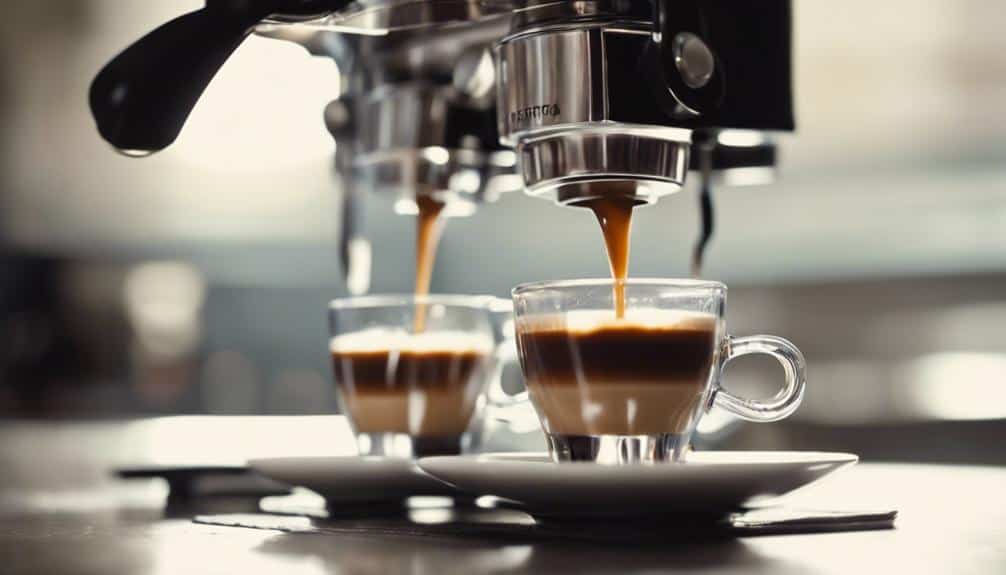
Long shots, a popular espresso variation originating in Italy and gaining prominence in mid-20th century America, are characterized by their milder taste and lighter coffee-to-water ratio compared to a ristretto. Long shots are created by passing more water through the coffee grounds during brewing, resulting in a larger volume of liquid with a less intense flavor profile. The longer extraction time of long shots allows for a more diluted yet complex flavor to develop, appealing to those who prefer a smoother coffee experience.
To further emphasize the differences between long shots and ristrettos, let's take a look at the key distinctions in the table below:
| Aspect | Long Shots | Ristrettos |
|---|---|---|
| Coffee-to-water ratio | Higher | Lower |
| Extraction time | Longer | Shorter |
| Intensity | Less intense | More intense |
| Flavor profile | Milder, complex | Strong, concentrated |
Long shots offer a unique take on traditional espresso brewing, catering to coffee enthusiasts seeking a nuanced and less overpowering coffee experience.
Long Shot History
With origins deeply rooted in Italian espresso culture, the history of the long shot espresso reveals a fascinating journey shaped by evolving coffee preferences and brewing techniques. Originating in Italy and gaining traction in mid-20th century America, the long shot emerged as a response to the shift towards milder coffee flavors and the advancements in espresso machine standards.
Renowned for its smooth and mild taste profile, the long shot appeals to a distinct segment of coffee drinkers seeking a lighter alternative to traditional espresso. This brewing method captured the attention of baristas and homebrewers alike for its versatility in crafting a range of coffee drinks, showcasing its unique flavor nuances.
Embraced particularly in the mornings, the long shot's delicate yet flavorful characteristics have earned it a special place in the hearts of those desiring a more subtle yet satisfying coffee experience. Its journey through history reflects the dynamic nature of coffee culture, adapting to meet the evolving tastes of enthusiasts worldwide.
Making a Long Shot
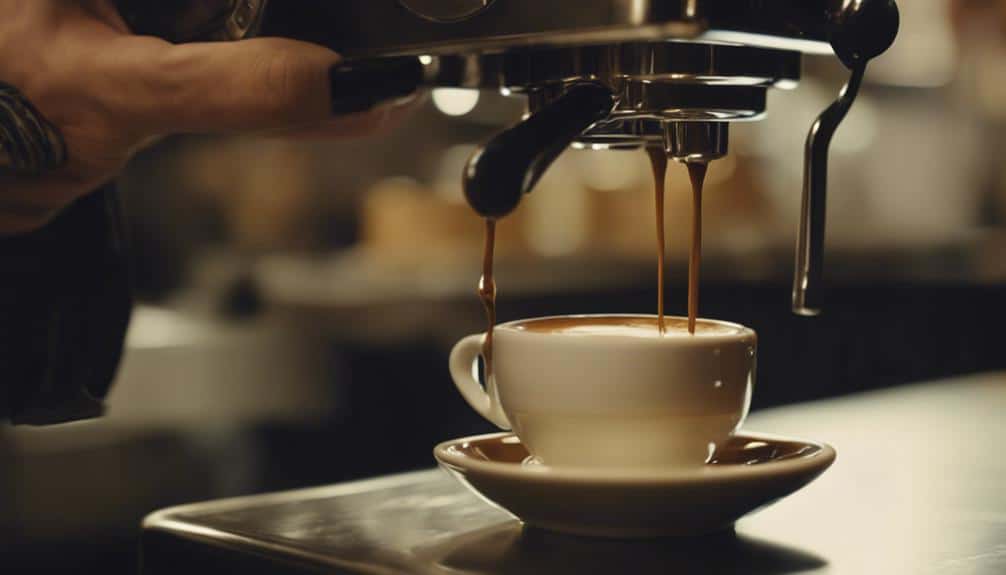
Crafting a perfect long shot espresso demands precision in grinding the coffee beans to a slightly coarser consistency for ideal extraction. The coarser grind allows for a longer contact time between the hot water and the coffee grounds in the espresso machine, resulting in a unique flavor profile. As the hot water passes through the coarser grounds, it extracts a balanced amount of caffeine and flavor, creating a milder taste compared to a traditional espresso shot.
To make a long shot, one must make sure the espresso machine is properly calibrated to accommodate the increased water volume. Running more water through the coarser coffee grounds during extraction is important to achieving the desired balance of flavors. The longer extraction process of a long shot brings out the bright acidity and subtle nuances of the coffee beans, providing an invigorating and lighter brew that's perfect for those who enjoy a more delicate coffee experience.
Key Differences Explained
Exploring the nuanced contrasts between Ristretto and Long shot reveals the intricate interplay of coffee-to-water ratios and extraction methods in shaping their distinct flavor profiles. When comparing these two espresso variations, several key differences stand out:
- Concentration: Ristretto, with half the water of traditional espresso, boasts a concentrated and intense flavor profile, while Long shot, using twice the water, offers a milder taste with bright acidity.
- Serving Size: Ristretto is typically served in smaller portions due to its bold and rich coffee flavors, whereas Long shot is a larger coffee drink.
- Origin: Ristretto, originating in Italy during World War 2, is revered as the purest form of drinking espresso, while Long shot gained popularity in mid-20th century America.
- Characteristics: The main disparities between Ristretto and Long shot encompass the coffee-to-water ratio, serving size, extraction time, crema thickness, and caffeine content, all contributing to their unique brewing and flavor profiles.
Choosing Between Long Shot and Ristretto
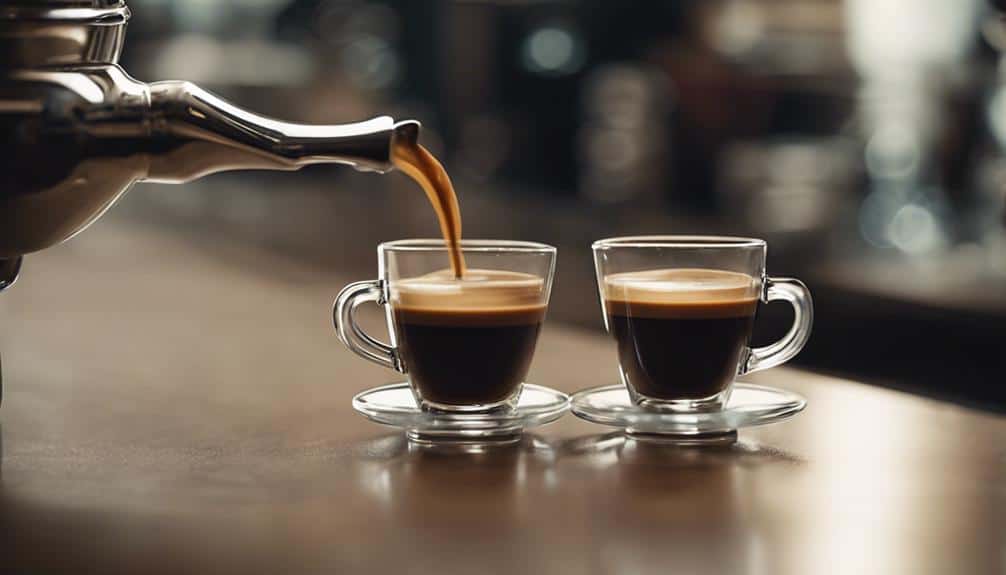
When deciding between a Long Shot and a Ristretto, one must consider their distinct flavor profiles and caffeine content to make the perfect choice based on personal preferences.
The Ristretto, extracted faster with a finer grind size, offers a bold and intense flavor due to a smaller coffee-to-water ratio. In contrast, the Long Shot, brewed with a coarser grind size and a larger coffee-to-water ratio, presents a milder taste.
The differing brewing methods of these espresso variations result in unique sensory experiences, catering to individual palates. Additionally, the Ristretto packs a potent punch of caffeine, making it an excellent energy booster, while the Long Shot contains less caffeine for those seeking a more moderate pick-me-up.
Understanding the nuances of water-to-coffee ratios, grind sizes, and extraction times is essential in selecting between the intense richness of a Ristretto or the smoother, milder notes of a Long Shot to elevate your coffee indulgence.
Conclusion
To sum up, the choice between a Ristretto and a Long Shot ultimately comes down to personal preference and desired coffee experience. Whether you prefer the bold and intense flavors of a Ristretto or the smoother and milder taste of a Long Shot, both options offer unique and satisfying espresso variations for coffee enthusiasts to enjoy.
Experimenting with different espresso styles can enhance your coffee journey and help you discover your perfect cup of espresso.

